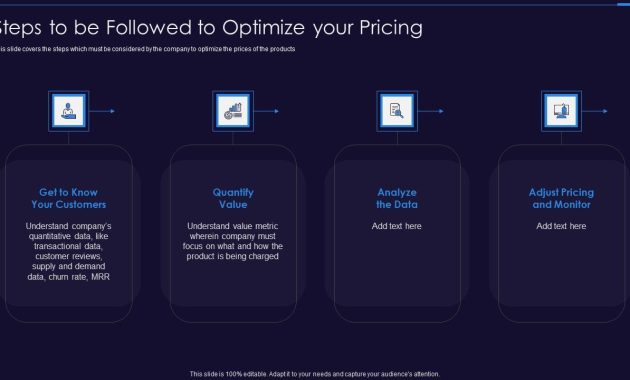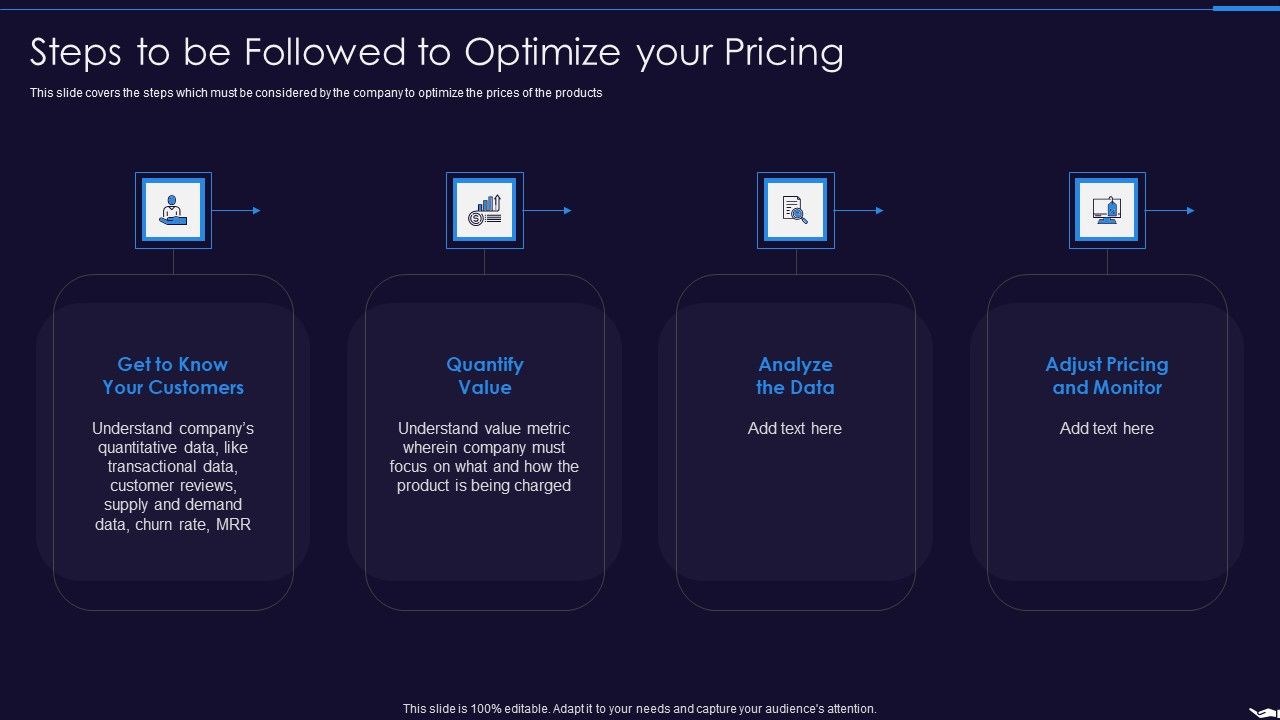
How BI Tools Help You Optimize Pricing: A Data-Driven Approach
In the competitive landscape of modern business, pricing is no longer a simple matter of cost-plus calculations. It’s a strategic lever, a complex equation influenced by market dynamics, customer behavior, and a myriad of other factors. Businesses that master the art and science of pricing stand to gain a significant competitive advantage. This is where Business Intelligence (BI) tools come into play. They provide the analytical muscle needed to transform raw data into actionable insights, enabling businesses to optimize their pricing strategies for maximum profitability and market share. This article will delve into how BI tools help you optimize pricing, exploring the various applications and benefits of leveraging data-driven decision-making in the pricing process.
Understanding the Power of Data in Pricing
Traditional pricing methods often rely on assumptions and historical data, which can be inherently flawed. They may not account for real-time market fluctuations, competitor actions, or the nuanced preferences of different customer segments. BI tools, on the other hand, empower businesses with the ability to collect, analyze, and visualize vast amounts of data from various sources. This includes sales data, customer demographics, website traffic, competitor pricing, and even social media sentiment. This comprehensive view allows businesses to make informed pricing decisions based on empirical evidence rather than guesswork.
Key Applications of BI Tools in Pricing Optimization
Price Elasticity Analysis
One of the most critical applications of BI tools in pricing is price elasticity analysis. This involves measuring how sensitive customer demand is to changes in price. By analyzing historical sales data, businesses can determine the optimal price points for their products or services. This helps avoid setting prices too high, which can deter customers, or too low, which can erode profit margins. Advanced BI tools can even predict price elasticity based on factors like product features, seasonality, and customer demographics. This allows for dynamic pricing strategies that adjust to market conditions in real-time. For example, a retailer could use BI tools to analyze the impact of a price decrease on sales volume during a specific promotion. This helps them understand if the price reduction is generating enough additional sales to justify the lower profit margin per unit.
Competitor Price Monitoring
Staying ahead of the competition is crucial in any market. BI tools can automate the process of monitoring competitor pricing, allowing businesses to quickly identify and react to price changes. This involves collecting data from competitor websites, online marketplaces, and other sources. By analyzing this data, businesses can benchmark their prices against the competition and make adjustments as needed. This ensures they remain competitive while maintaining profitability. For instance, a company using BI tools can set up automated alerts to notify them when a competitor lowers the price of a similar product. This allows them to quickly evaluate their own pricing strategy and make necessary adjustments to remain competitive.
Customer Segmentation and Personalized Pricing
Not all customers are created equal. Different customer segments have different price sensitivities and willingness to pay. BI tools enable businesses to segment their customer base based on demographics, purchase history, behavior, and other factors. This allows for personalized pricing strategies that cater to the specific needs and preferences of each segment. For example, a software company might offer different pricing tiers based on the size and needs of its customers. Analyzing customer data using BI tools can reveal patterns and insights that inform these segmentation strategies. This leads to increased customer satisfaction and higher conversion rates. Personalized pricing can dramatically increase revenue, by offering discounts to attract new customers or loyalty programs to retain existing ones.
Sales Performance Analysis
BI tools allow businesses to analyze sales performance data to identify trends and patterns. This includes tracking sales volume, revenue, and profit margins across different product categories, regions, and time periods. By analyzing this data, businesses can identify which products are performing well, which ones are underperforming, and which pricing strategies are most effective. This information can then be used to optimize pricing, promotion, and inventory management. For instance, a retailer might use BI tools to analyze sales data during a specific promotion to determine if the price reduction generated enough additional sales to justify the lower profit margin per unit. This helps them understand the effectiveness of their pricing strategy and make improvements for future promotions.
Forecasting and Predictive Analytics
Beyond analyzing historical data, BI tools can also be used for forecasting and predictive analytics. By leveraging machine learning algorithms, businesses can predict future demand, sales, and revenue based on historical data, market trends, and other relevant factors. This allows them to proactively adjust their pricing strategies to maximize profitability. For example, a hotel chain could use BI tools to forecast demand for rooms during a specific event or season. This allows them to adjust their pricing accordingly to maximize revenue. Predictive analytics can also be used to forecast the impact of price changes on sales volume, allowing businesses to make more informed pricing decisions. This allows companies to set the right prices, at the right time, to maximize revenue.
Benefits of Using BI Tools for Pricing Optimization
- Improved Profitability: By optimizing pricing strategies, businesses can increase their profit margins and overall profitability.
- Increased Revenue: Data-driven pricing strategies can lead to higher sales volume and increased revenue.
- Enhanced Competitiveness: Staying informed about competitor pricing allows businesses to remain competitive in the market.
- Better Customer Satisfaction: Personalized pricing strategies can lead to increased customer satisfaction and loyalty.
- Data-Driven Decision-Making: BI tools provide the insights needed to make informed pricing decisions based on empirical evidence.
- Reduced Risk: By analyzing market dynamics, companies can mitigate risks and avoid pricing mistakes.
Implementing BI Tools for Pricing Optimization: A Step-by-Step Guide
- Define Your Objectives: Clearly define your pricing goals and objectives. What do you want to achieve with your pricing strategy?
- Choose the Right BI Tools: Select BI tools that are suitable for your business needs. Consider factors like data integration capabilities, analytical features, and ease of use.
- Gather and Prepare Your Data: Collect and prepare the data needed for your analysis. This includes sales data, customer data, competitor data, and other relevant information.
- Analyze Your Data: Use the BI tools to analyze your data and generate insights. Identify trends, patterns, and opportunities for improvement.
- Develop and Implement Pricing Strategies: Based on your analysis, develop and implement pricing strategies that align with your objectives.
- Monitor and Evaluate Your Results: Continuously monitor and evaluate the performance of your pricing strategies. Make adjustments as needed.
Choosing the Right BI Tools
Selecting the right BI tools is crucial for successful pricing optimization. The ideal tool will depend on the size of your business, the complexity of your data, and your specific pricing needs. Some popular BI tools include:
- Tableau: Known for its user-friendly interface and powerful data visualization capabilities.
- Power BI: Microsoft’s BI tool, offering a wide range of features and integrations.
- Qlik Sense: A self-service BI tool with a focus on data discovery and exploration.
- Looker: A BI tool that emphasizes data governance and collaboration.
- Sisense: A BI tool with a focus on embedded analytics and data-driven applications.
Consider factors like data integration capabilities, analytical features, ease of use, and cost when choosing a BI tool. It’s often beneficial to start with a trial period to evaluate the tool’s suitability for your needs.
Challenges and Considerations
While BI tools offer significant benefits for pricing optimization, there are also some challenges and considerations to keep in mind:
- Data Quality: The accuracy of your analysis depends on the quality of your data. Ensure that your data is clean, accurate, and reliable.
- Data Integration: Integrating data from various sources can be complex. Ensure that your BI tool can seamlessly integrate with your existing systems.
- User Training: Your team needs to be trained on how to use the BI tools effectively.
- Data Security: Protect your sensitive pricing data from unauthorized access.
- Dynamic Market Conditions: Market conditions are constantly changing, so regularly review and adapt your strategies.
The Future of Pricing and BI Tools
The use of BI tools in pricing optimization is expected to grow in the coming years. As businesses generate more data, the need for sophisticated analytical tools will only increase. Artificial intelligence (AI) and machine learning (ML) are also playing a growing role in pricing, automating tasks and providing even deeper insights. Companies that embrace these technologies will be best positioned to thrive in the competitive market. The integration of AI and ML with BI tools will allow for even more sophisticated pricing strategies, including:
- Dynamic Pricing: Automatically adjusting prices based on real-time market conditions.
- Predictive Pricing: Forecasting future demand and setting prices accordingly.
- Personalized Pricing: Tailoring prices to individual customer preferences.
Conclusion: Embracing Data-Driven Pricing for Success
In conclusion, BI tools are indispensable for modern pricing optimization. They empower businesses with the data-driven insights needed to make informed decisions, increase profitability, and gain a competitive edge. By leveraging the power of BI tools, businesses can move beyond traditional pricing methods and embrace a more strategic and effective approach to pricing. Understanding how BI tools help you optimize pricing is crucial for any company looking to succeed in today’s dynamic marketplace. Implementing a data-driven pricing strategy is no longer a luxury but a necessity for businesses that want to thrive.
[See also: Competitive Analysis for Pricing Strategies] [See also: Customer Segmentation and Pricing] [See also: How to Use Data to Improve Sales]

